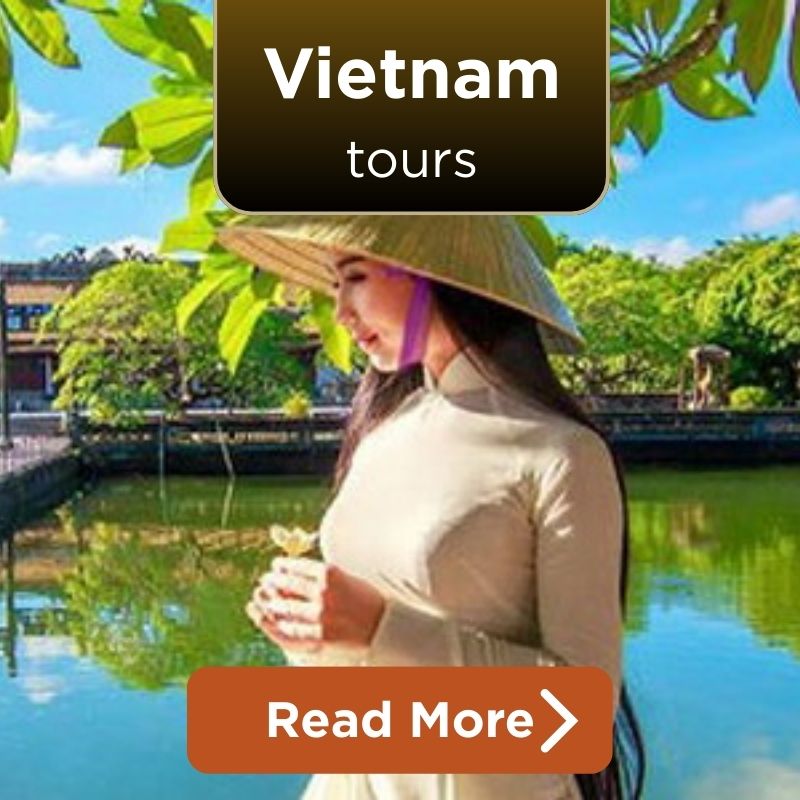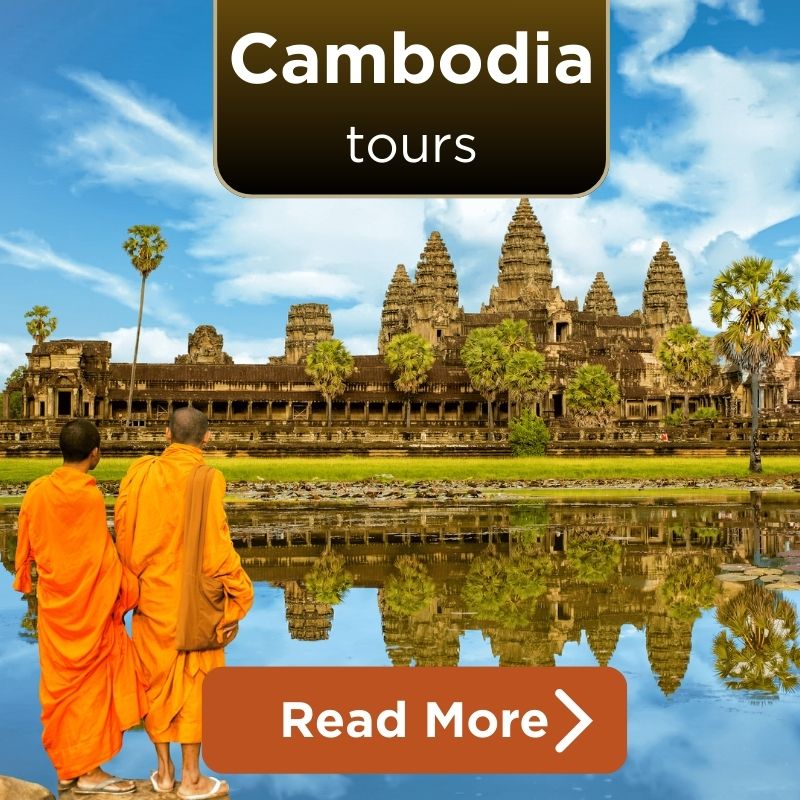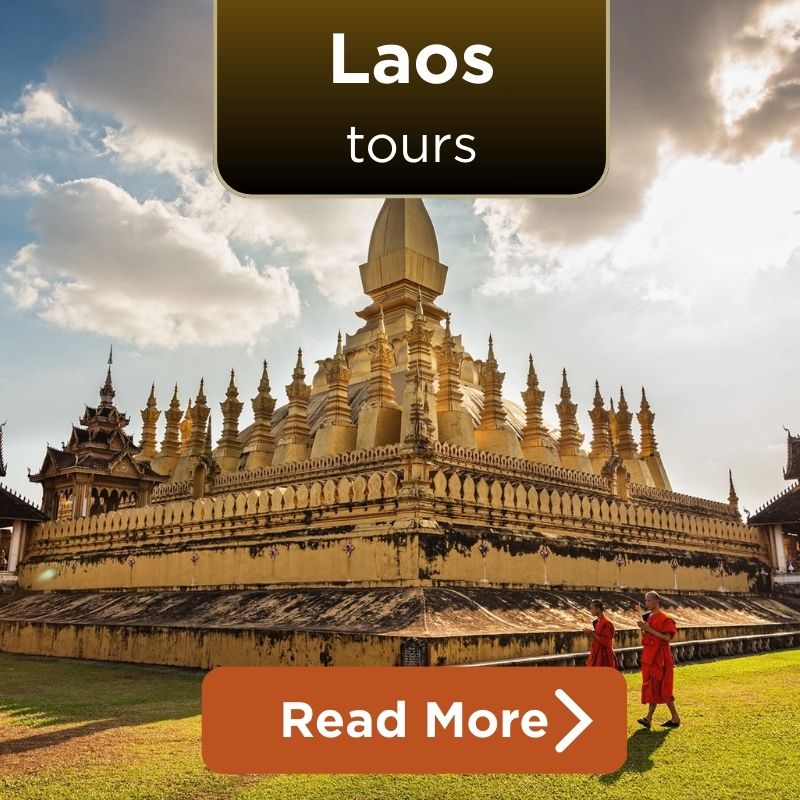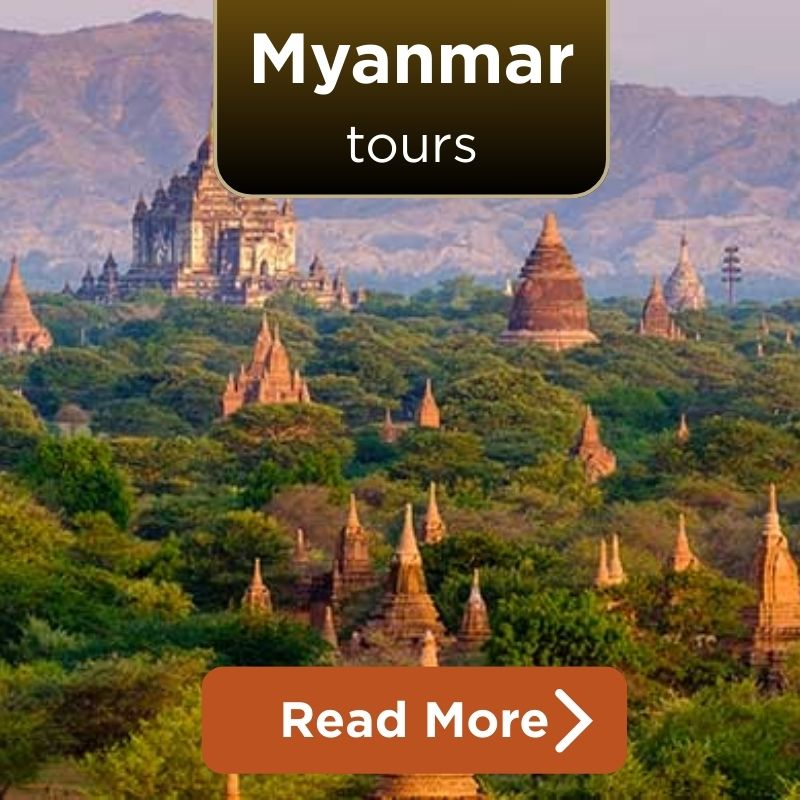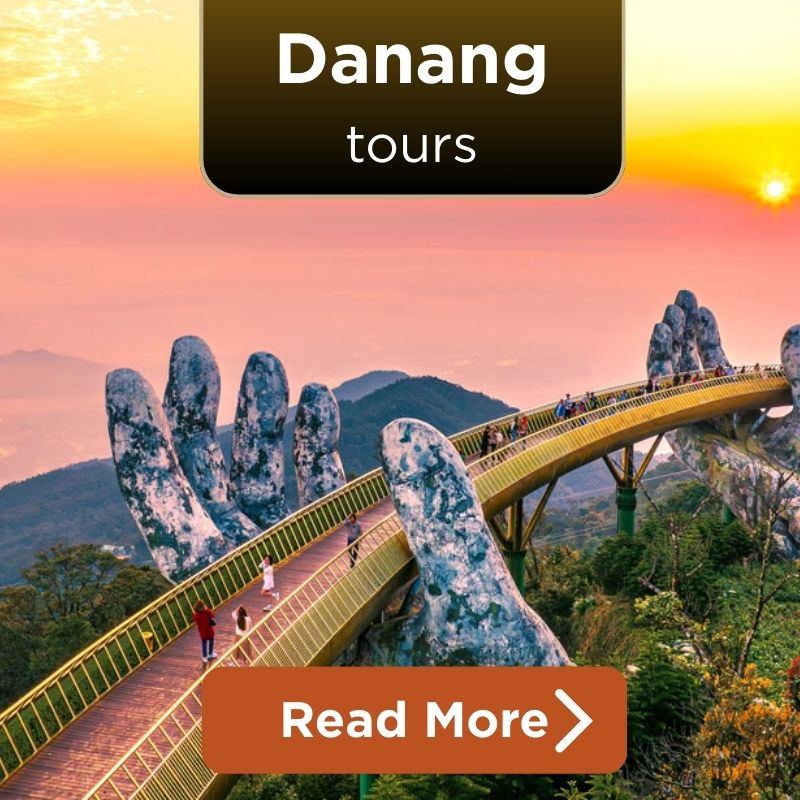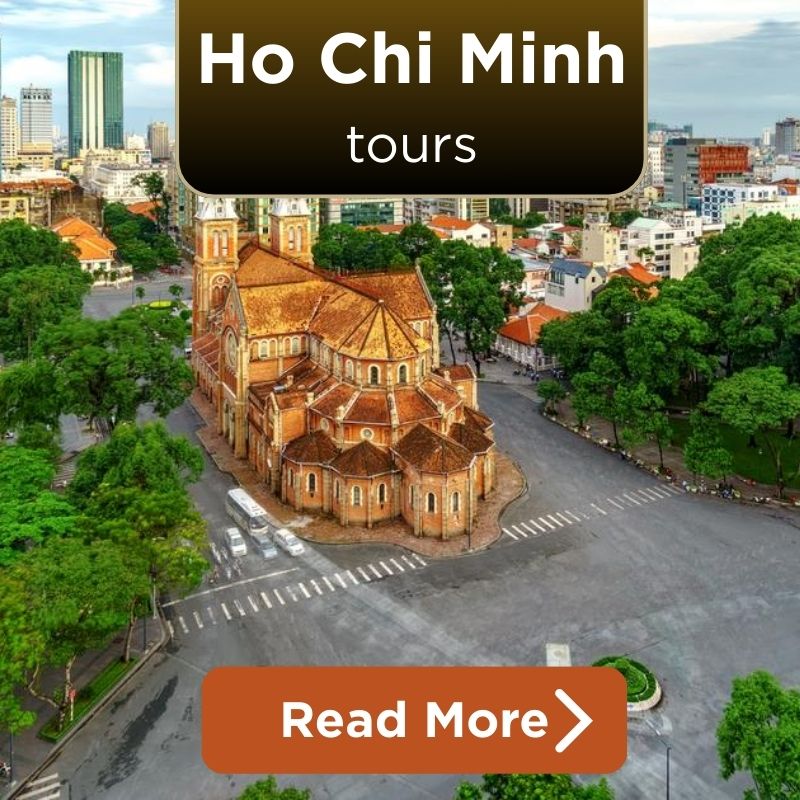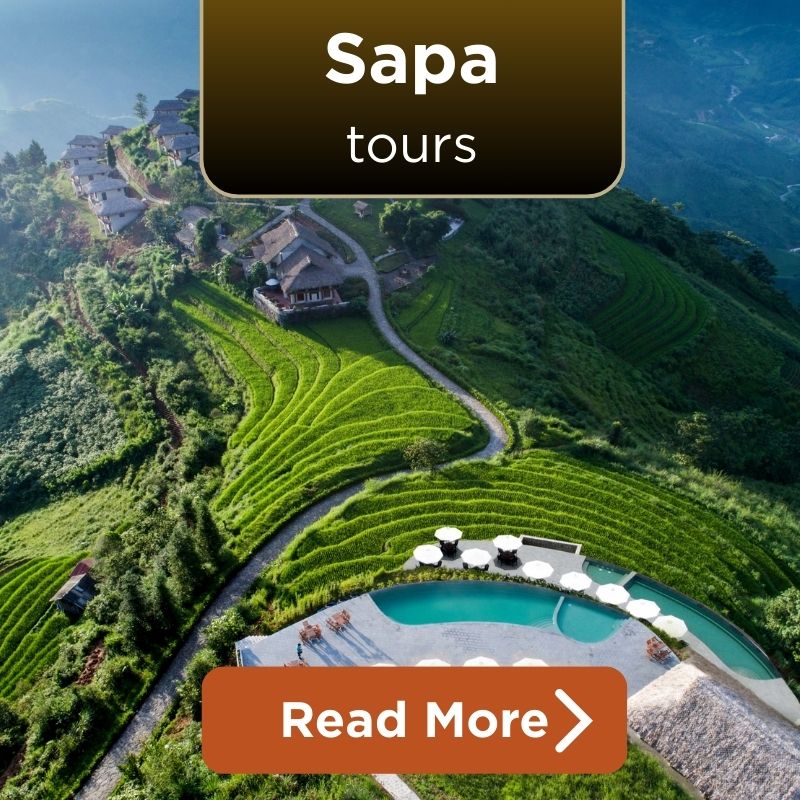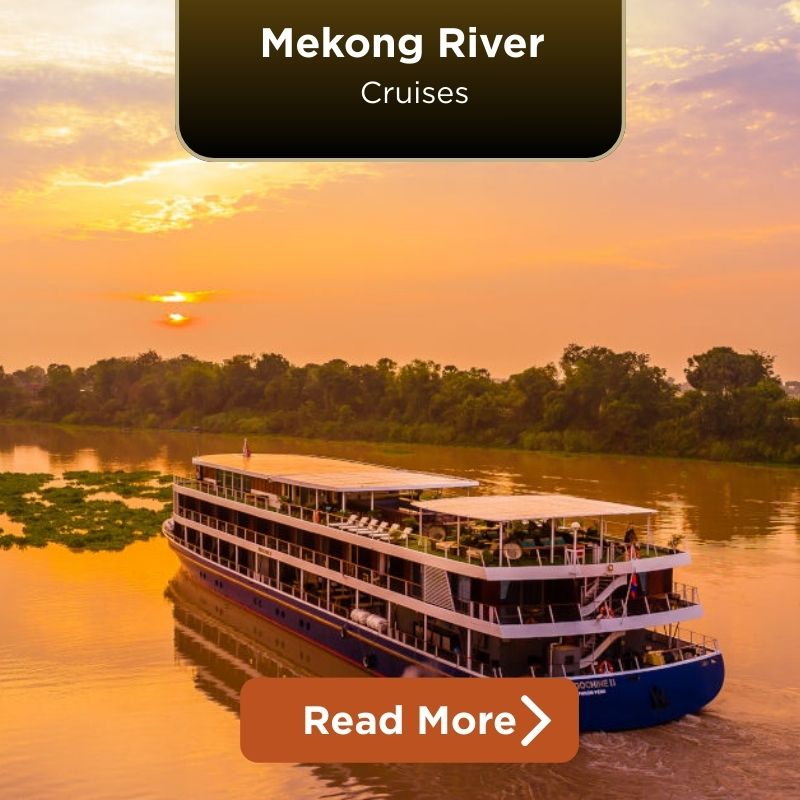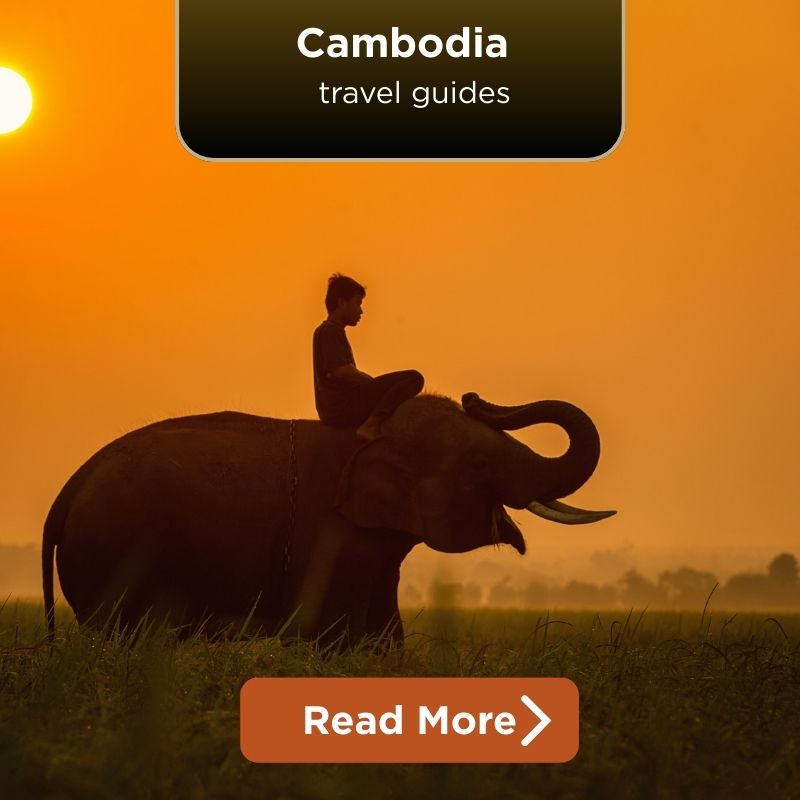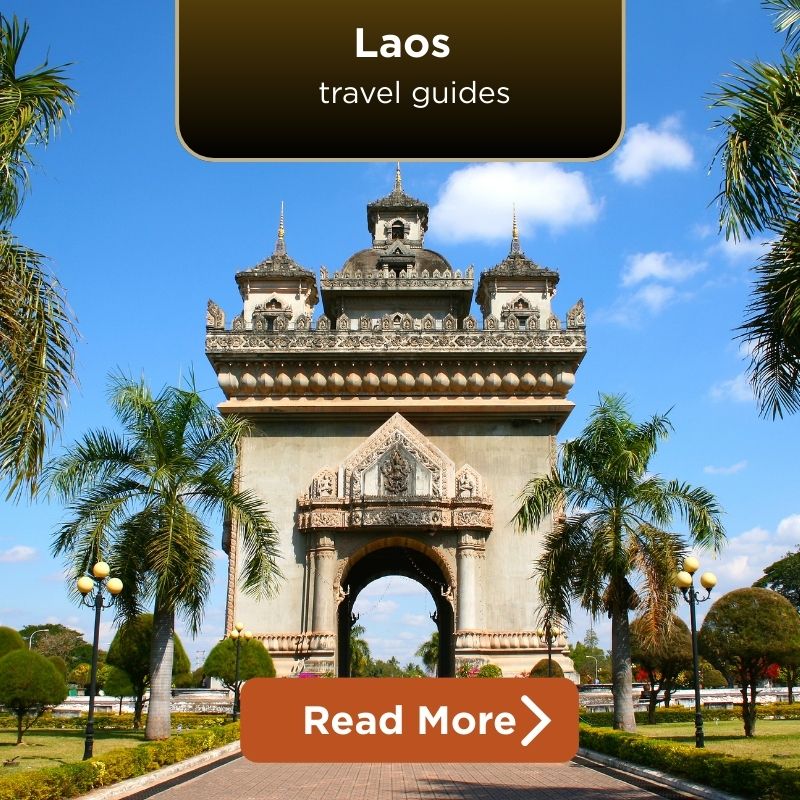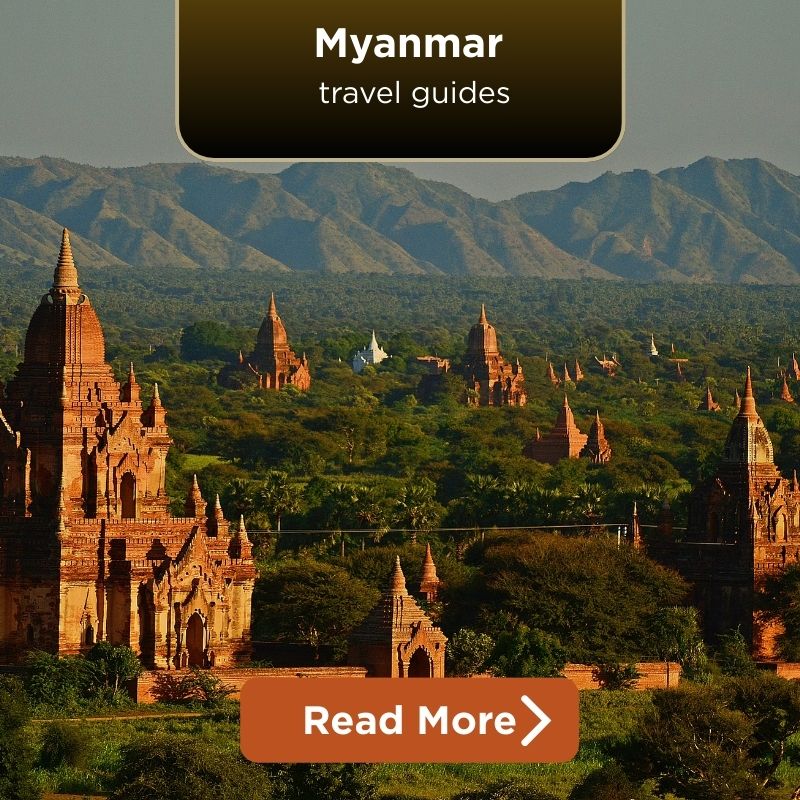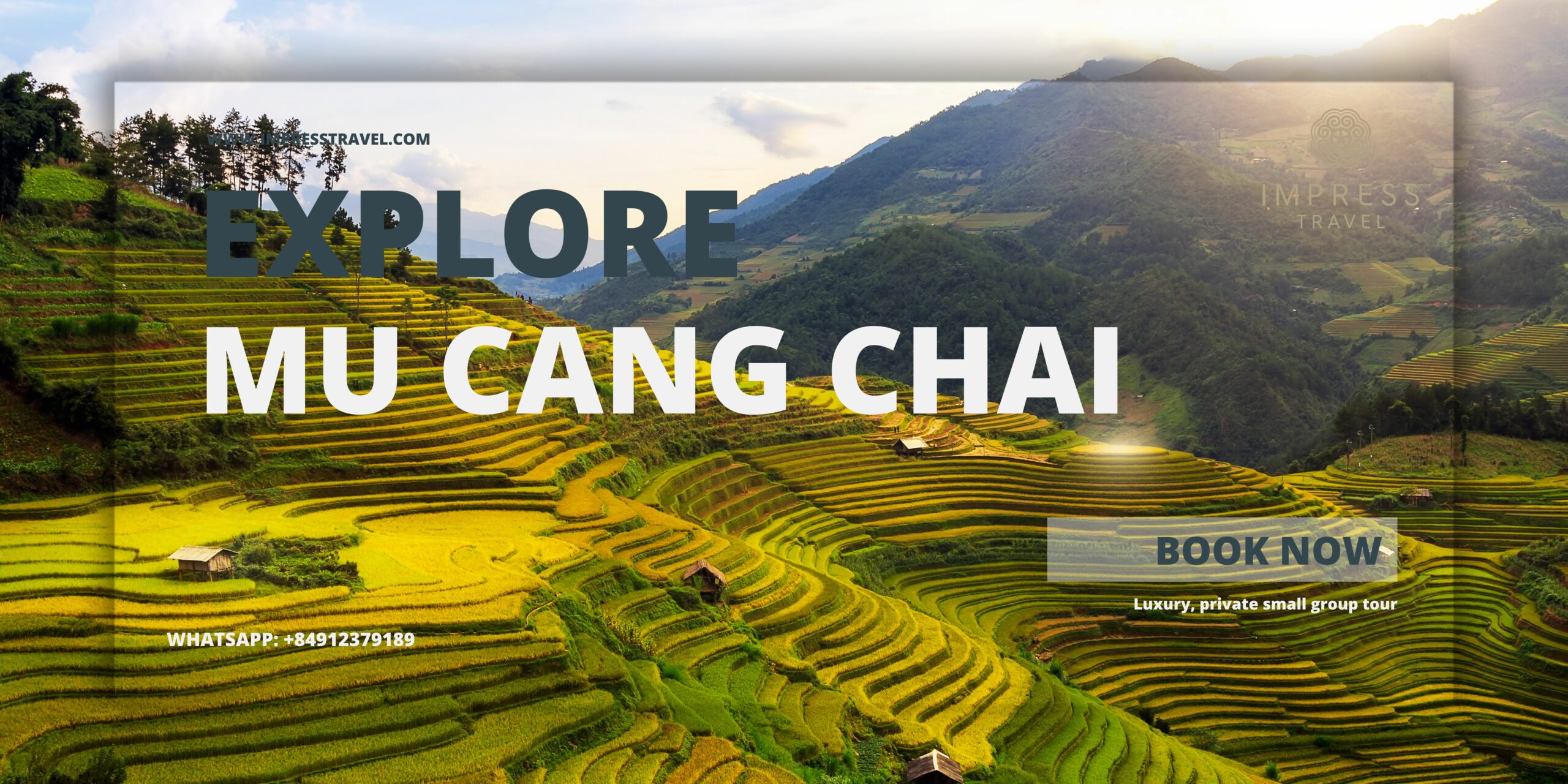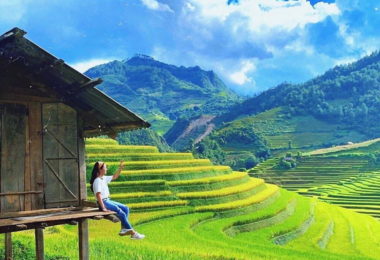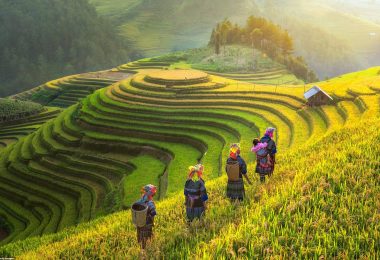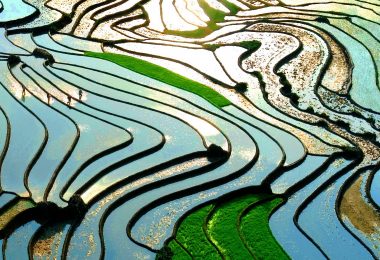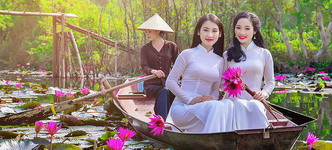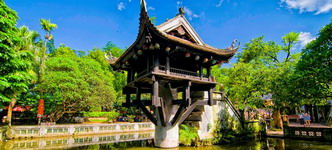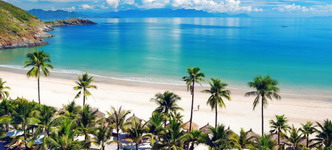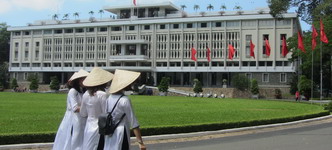The People of the Peaks: Ethnic Makeup of Mu Cang Chai
The Mu Cang Chai district in Yen Bai Province is inhabited by a lively mix of ethnic minorities and is predominantly composed of around 90% Hmong ethnic. The rest of the people are Thai and Kinh communities, creating a cultural mixture of tribes in Mu Cang Chai. The Mu Cang Chai ethnic group has cultivated and maintained its identity for centuries.
Residing at elevations between 800 to 1,700 meters above sea level, local inhabitants in Mu Cang Chai have learned to live in harmony with nature. Their daily activities, cultivating rice terraces, constructing wooden houses, and engaging in traditional skills, reflect the strong ethos Mu Cang Chai instilled in coexisting harmoniously with nature. This landscape doesn’t only affect their way of living but sets Mu Cang Chai people’s character.
Of them all, however, the Hmong Mu Cang Chai people are key to cultural conservation through music, weaving, and rituals. Their presence is most dynamic at the stunning Mu Cang Chai market, where travelers have real contact with the Mu Cang Chai minority people and see for themselves this wonderful ethnic legacy.
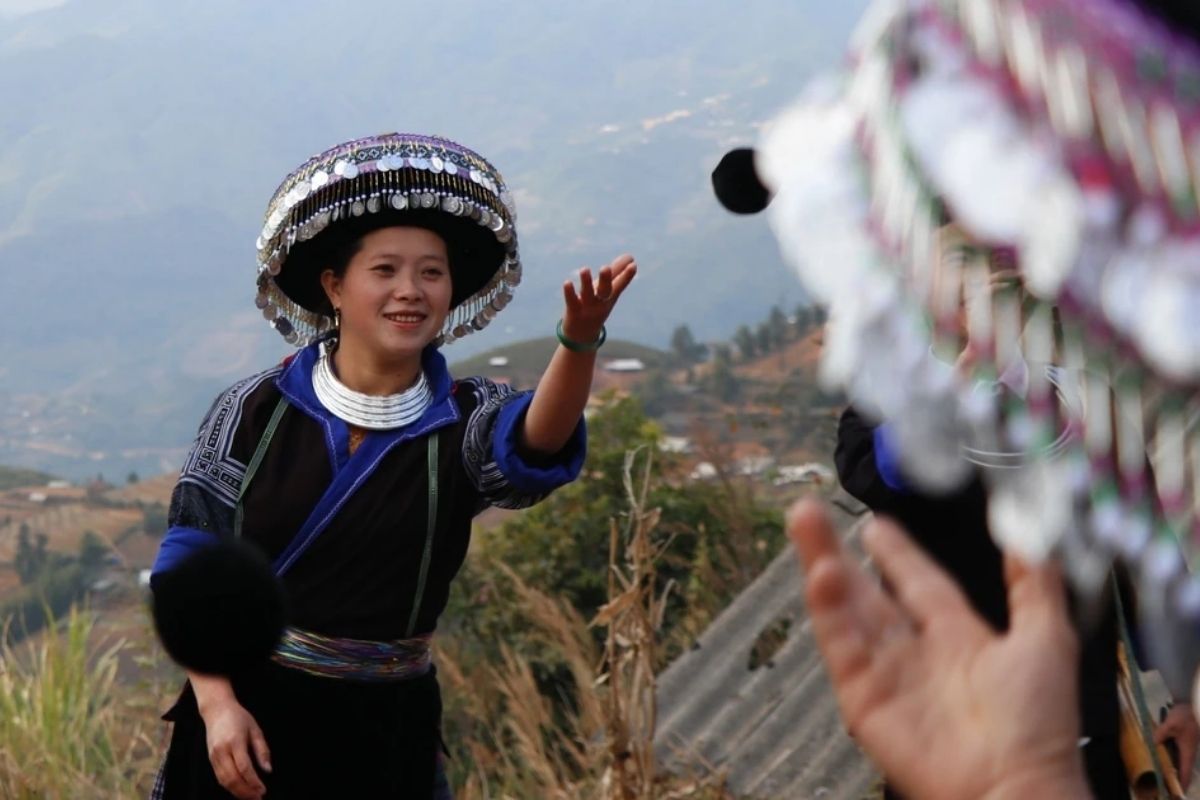
Hmong ethnic (Source: vietnamplus)
Hmong Culture in Mu Cang Chai: Resilience, Rituals & Revival
Customs and Beliefs: The Soul of the Hmong Highlands
Why the Mong People Chose Mu Cang Chai
- The people of Mong originated in Lao Cai, Ha Giang, and Yunnan (China) several centuries back.
- They lived in the Mu Cang Chai district highlands at elevations of between 800 to 1,700 meters.
- This height is suitable for swidden cultivation (slash-and-burn agriculture) and cultural retention, making it possible for ethnies Mu Cang Chai to reside in relative seclusion and preserve their unique identity.
Belief System and Household Worship
- The Mu Cang Chai people believe in polytheism and ancestor worship.
- Every Hmong family reveres three important religious protectors:
- Door God (than cua): Protects the home’s entrance
- Hearth God (than bep): Provides warmth and family harmony
- Pillar God (than cot nha): Keeps the home structure strong and sacred
- These are performed in wooden houses, seemingly plain but full of profundity.
Hmong Tet (Tet Mong)
- Observed approximately a month before the Vietnamese Lunar New Year (sometime late November to early December, lunar calendar).
- Members of families prepare a paper talisman and affix it to the center wall of a house.
- Chicken blood is used to rub on the talisman in a form of offering to attract good luck, peace, and prosperity for an entire year.
- This is one of the most unique traditions of the ethnic Mu Cang Chai and a necessary ceremony for any family.
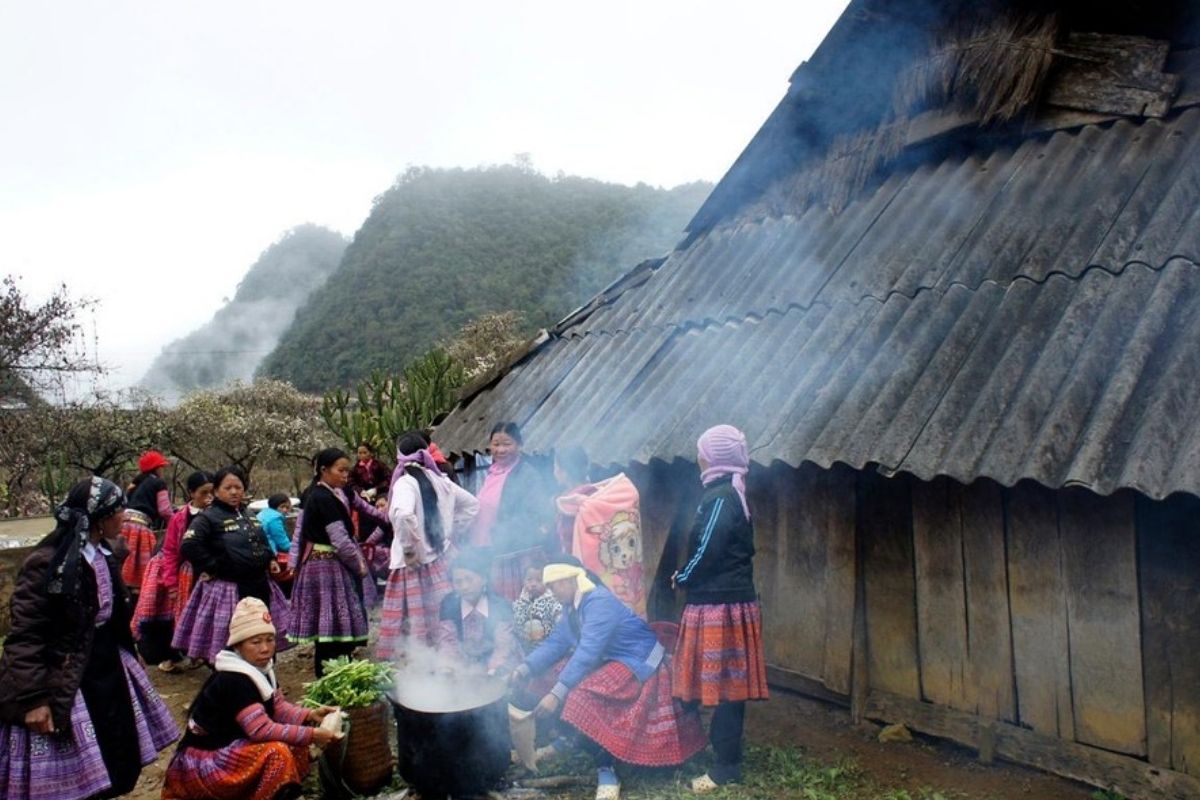
Hmong Tet (Tet Mong) (Source: vietnamplus)
Funeral Beliefs and Death Rituals
- The Mu Cang Chai people believe that each individual possesses:
- Three honorary spirits (hon)
- Seven souls (via)
- After death:
- A single spirit goes to heaven
- One spirit reincarnates
- The other dies to bring warmth and light to other people
- The funerary rites generally span several days and consist of the following:
- Shamanic ceremonies
- The sacrificing of animals (chickens or pigs would usually be used)
- Rituals to guide the spirit on its way
Festivals That Speak to the Soul
Gau Tao Festival (Hoi Gau Tao)
- Time: January 1 to 15 (Lunar calendar)
- Address: Generally in Lao Chai, Che Tao, De Xu Phinh
- Why it matters: Once intended only as a children’s prayer, it has evolved, seeking health, happiness, and good harvests.
- What to expect:
- Khen Mong Dancing and Activities
- Swing games, top-spinning
- Games of singing and pairing off
- It is the largest cultural event for the ethnic Mu Cang Chai, infusing a sacred message with a cheerful community spirit.
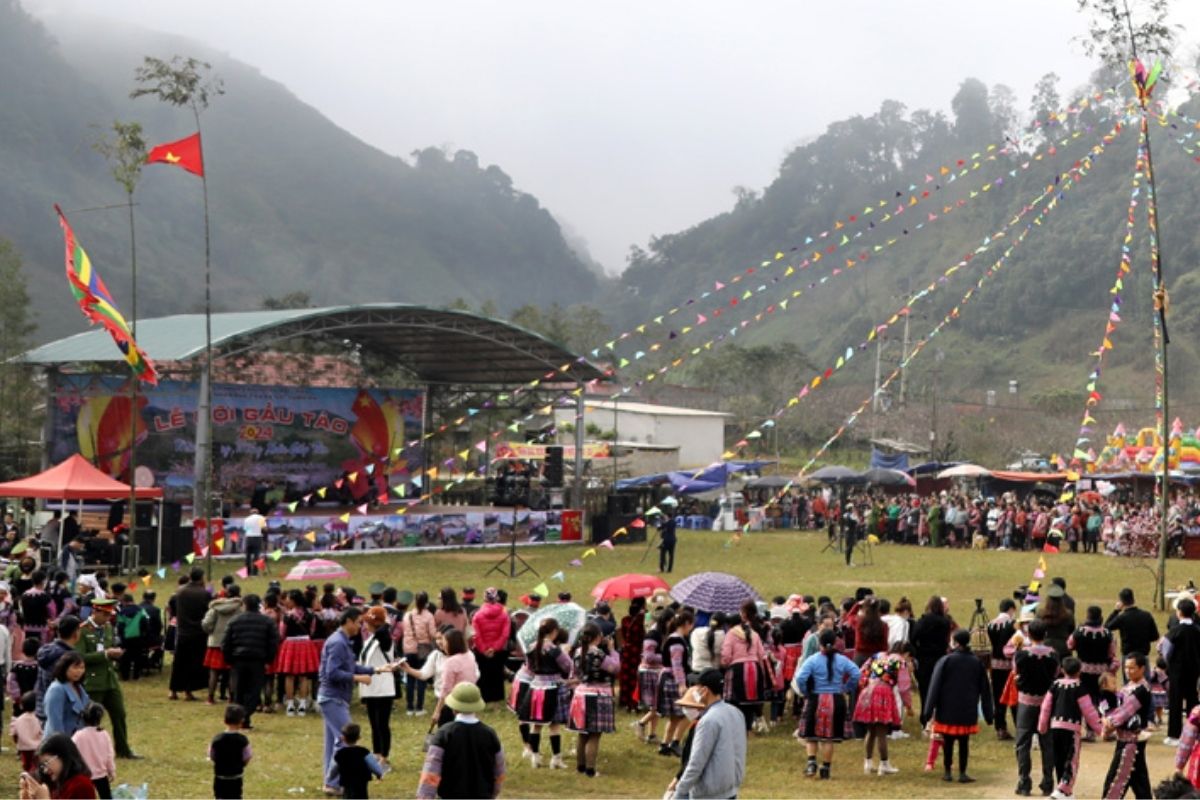
Gau Tao Festival (Hoi Gau Tao) (Source: baohoabinh)
New Rice Celebration (Le Mung Com Moi)
-
- Time: First of October (after the harvesting of the rice)
- Address: Villages such as La Pan Tan, Khao Mang
- Purpose: To express thanks to the capital of the land and ancestors for this good harvest.
-
- Families would dine together on sticky rice and homemade wine
- Simple family ceremonies
- Folk tradition and assembly
A silent but profoundly meaningful practice that represents the ethos of Mu Cang Chai: gratitude, connection, spiritual balance.
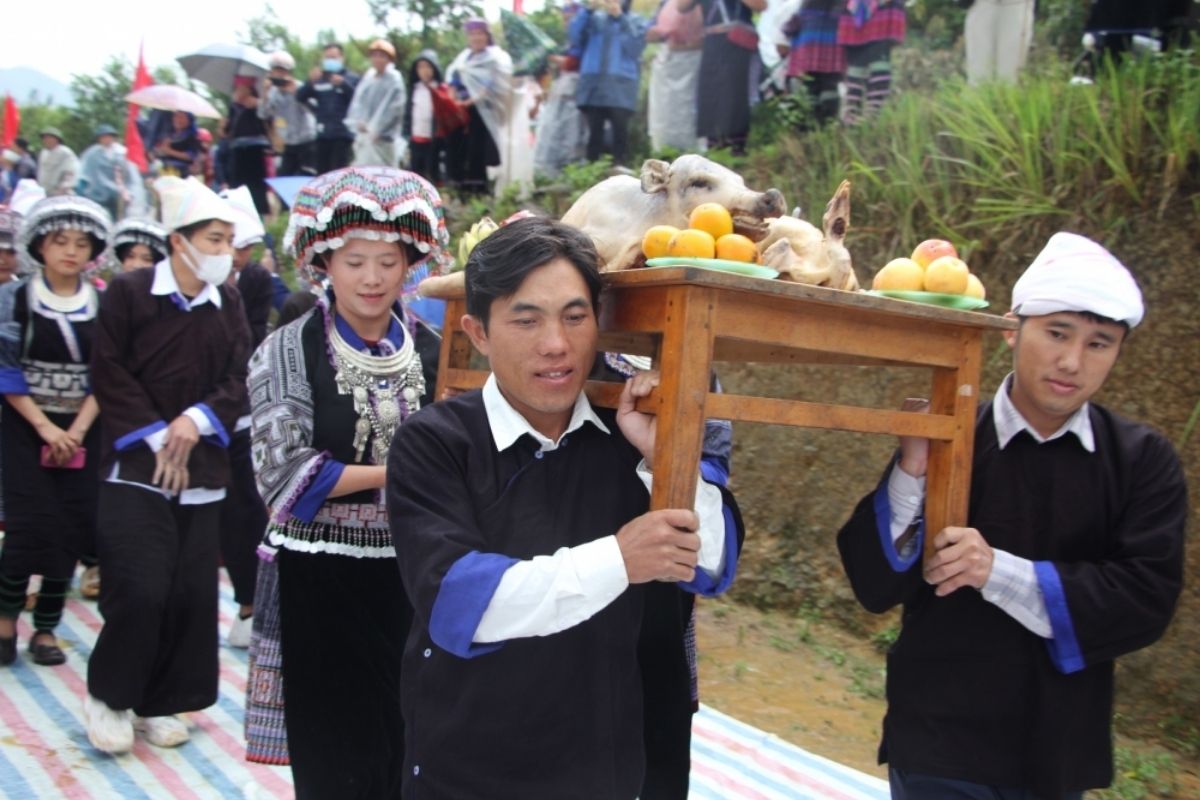
New Rice Celebration (Le Mung Com Moi) (Source: tuoitrethudo)
To Day Flower Festival
-
- Time: Late December (when To Day flowers bloom)
- Address: Central Mu Cang Chai town, and some communes here.
- Purpose: To celebrate nature and heritage.
- Activities:
-
- Traditional fashion shows
- Vendors’ market and food stalls
- A more recent addition to the festival lineup that demonstrates how the Mu Cang Chai ethnic minority combines natural beauty with cultural pride.
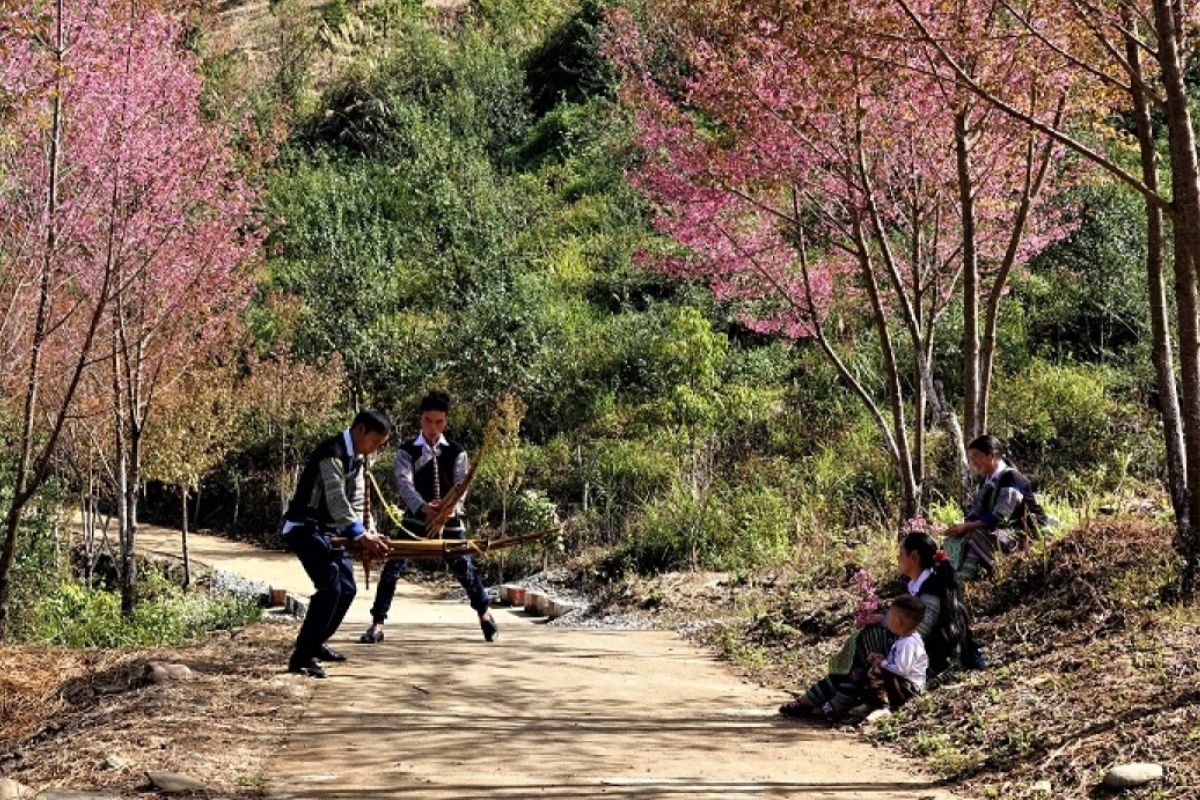
To Day Flower Festival (Source: vov)
The Thai Ethnic Group: Harmony Through Dance and Design
Stilt Houses and Village Design – Living in Harmony with Nature
In the remote Mu Cang Chai district’s valleys near Nam Co, Khao Mang, and Ho Bon communes, Thai villages nestle in the valleys and offer peaceful riverside and rice paddy experiences. These are not settlements, they are living architectural landscapes, a result of centuries of adaptation and care.
The Thais here live in stilted traditional houses all made from native materials such as bamboo, jackfruit wood, palm leaves, and rattan. These houses are usually raised to a height of 2 metres above the ground:
- Keep dry during the rainy season, or it won’t flood!
- Space under each section for storing firewood, weaving tools, and livestock
- Make it so that cool air can feel naturally best for humid rice seasons
What is interesting is the construction method (it is nailed or screwed), or rather there isn’t any. Instead, artisans employ interlocking joints, bamboo pegs, and tree bark ropes, yet a system so tightly wound that the house holds up under decades of wind, rain, and time.
The plan of the individual dwellings is annual:
- The main living space is partitioned with woven bamboo into an altar, a sleeping area, and a kitchen.
- The fireplace (bep lua) is always put in the middle of the house as the unity one.
- A whole-log ladder leads from the ground up to the front balcony.
In places such as Ban Nam Coong (in the commune of Khao Mang) or Ban Deu (near Nam Co), houses are arranged in rows along the edge of the valley, with the raised ground floor oriented toward the sunrise, and the rice fields of the valley spreading out below. This design is a reflection of not only feng shui but a strong affinity for the earth’s cycles.
These ramshackle stands of stilt houses are more than shelter, they are emblematic of the soul of Mu Cang Chai, where architecture, culture, and spirituality commingle in everyday life. From the thatching of roofs to how kitchen smoke is vented, each detail tells the story of the way the Thai ethnic group lives with the land, not just on it.
For a visitor, walking through a Thai village, over the aural sensation of a fire crackling, you’ll see elders weaving under the house floor, that’s raw connection and experience, it’s those kind of life-affirming encounters that make the exploration of the ethnies Mu Cang Chai so rewarding by the same token.
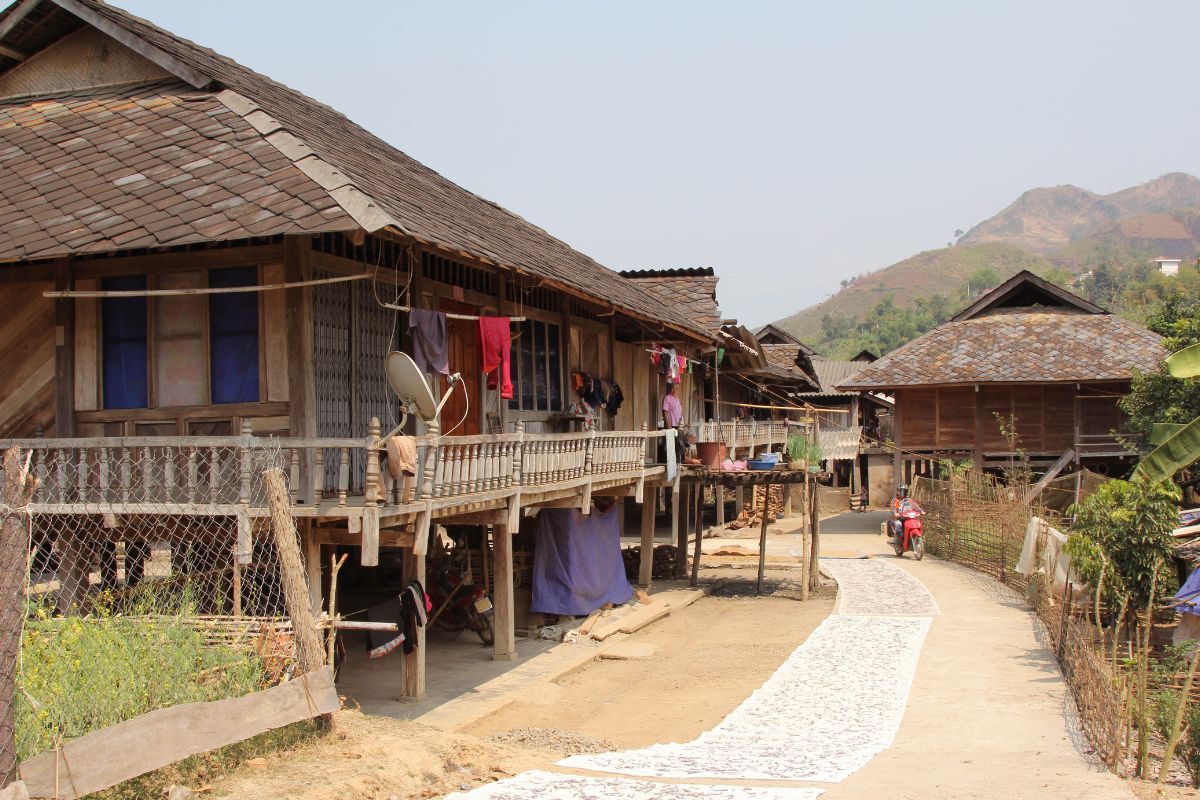
Stilted traditional houses (Source: laichau)
Xoe Dance and Communal Unity
The Xoe dance is one of the most stunning cultural jewels of the Thai, a dance that is performed in a happy, unity, beautiful, and community spirit.
- An UNESCO Intangible Cultural Heritage, Xoe is performed during festivals, harvest time, and on New Year’s days.
- The dancers, frequently in rings, elegantly extend and twirl their arms, turn and rock in time. This isn’t a solo act but joint rite of happiness.
- The dance is performed with drums, gongs and happy traditional songs, which change every assembly meeting to an animated celebration of being Thai.
- In the world of Mu Cang Chai district’s ethnic minority groups, Xoe does more than entertain, it bonds communities across generations.
- Numerous dances will be organized at village centers or local schools, which enable local people of Mu Cang Chai to live out this tradition with all of their pride.

Xoe Dance and Communal Unity (Source: vnanet)
Thai Festivals in Mu Cang Chai – Celebrating Harmony and Heritage
Xen Ban – Xen Muong (Village Spirit Ceremony)
-
- Time: Observed on the first lunar month, immediately after Tet
- Location: Thai villages, such as Ban Deu (Nam Co commune) and Ban Moi (Ho Bon commune)
- Purpose: To give thanks to the village and land guardian spirits, to pray for lasting peace, good health, and rich harvests
-
- Communal offerings, since offerings have to be collectively made within a village, each village selects a tree or shrine as the sacred tree.
- Rituals vary but involve the sacrifice of a pig or buffalo, sharing meals and prayers led by village elders.
- Mass Xoe dances are performed in the village’s common yard, and people hold hands and dance in a circle that grows bigger and bigger.
- Cultural Significance: This is among Thai people’s spiritual activities, which increases local solidarity and the association between people and the earth, an indispensable part of the Mu Cang Chai spirit.
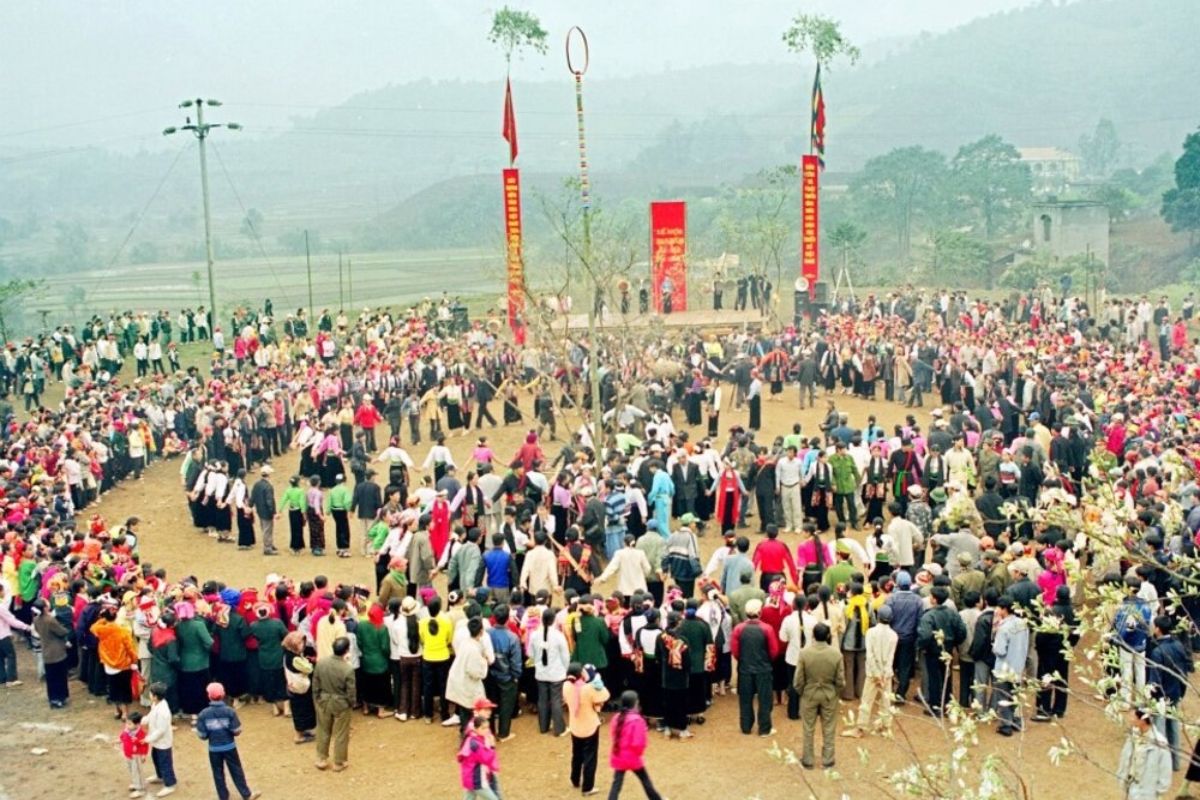
Xen Ban – Xen Muong (Source: baodantoc)
Then Kin Pang Festival
- Time: It is generally in late March, which is also Ban flower blooming season (just like the festival in Dien Bien)
- Address: Some Thai villages around Tram Tau and southern Mu Cang Chai
- Purpose: To worship ancestors and pray for peace through traditional “Then” spiritual singing
- Activities:
- Local shamans or religious song (Then masters) masters perform gong and fan ritual singing.
- Villagers participate in dance, song, and the preparation of special foods for the ritual.
- Young men and women dressed in their traditional Thai costumes play folk games and take part in matchmaking activities
- Cultural Significance: Now, Kin Pang aims to reinforce the connection between the old and new generations, maintain the continuity of intangible heritage using performance, ritual, and observation. It’s a subtle, but visually arresting, look at how the Mu Cang Chai ethnic minority preserves their identity through ritual.
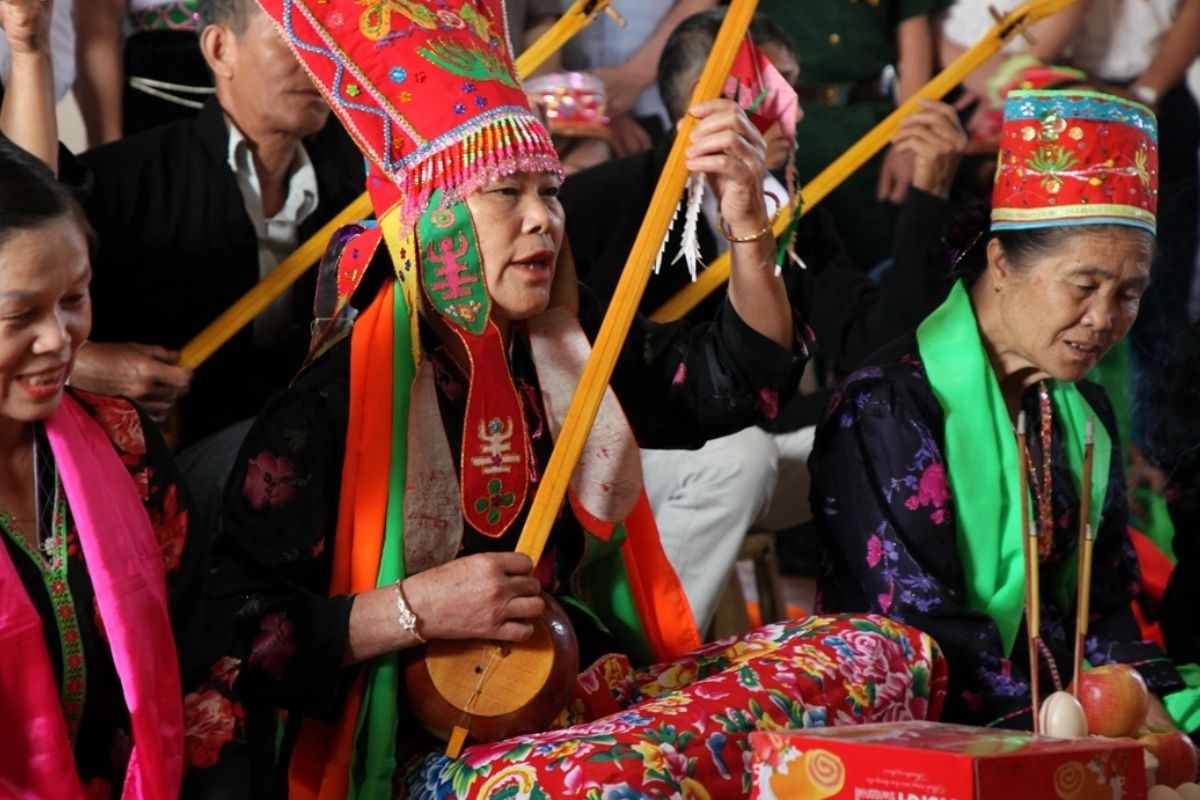
Then Kin Pang Festival (Source: vov)
How to Visit ethnies mu cang chai Respectfully
DOs and DON’Ts When Visiting ethnies mu cang chai
DO:
- Acknowledge elders’ presence, greet them with a smile and slight nod; it’s a sign of respect.
- Always ask before entering someone’s home or taking photographs, especially during ceremonies or family meals.
- Do not decline participation if offered, be it in the kitchen, with traditional clothing, or in a Xoe circle.
DON’T:
- When you sit, don’t aim your feet at altars or elder family members.
- When you’re visiting, wear long pants and loose, covering your shoulders, it is particularly important during festivals or harvest rituals.
- You should avoid the area where the Khen works or stands. Anything that is considered sacred, such as the Khen, the altar, etc.
What to Wear and How to Interact when explore ethnies mu cang chai
- Don’t pick an outfit that is too formal, but also don’t dress too casually. Light clothing that is good for covering (especially during the paddy seasons or on higher elevation mountain sides).
- If you’re staying overnight in a homestay, you might also take a small gift – dried fruit or tea, or basic stationery for children, are welcome.
- Learn a few local words, even saying “hello” in Hmong or Thai, can make a real impact.
The tribes in Mu Cang Chai are not attractions, they are living communities that have been around for centuries. Think of your time in such places as a cultural exchange, rather than a photo op.
Ethical Souvenir Shopping
Shopping at Mu Cang Chai local markets is a good way to encourage the ethnic minority, but do it right:
- Whenever you can, purchase directly from artisans or family cooperatives, handwoven brocade, beeswax textiles, and silver jewelry.
- Inquire about the source of everything. To know the story behind a fabric, or a Khen, is more than a souvenir; it’s a piece of the heritage cultures you’ve just seen.
- Do not become too aggressive in your haggling. Good prices help keep traditional crafts alive and provide an income for some great ethnic families.
Conclusion
Mu Cang Chai isn’t just a place, it’s a way of life. From the harmonious tunes from the Khen Mong to the radiant Xoe dances, every custom of the ethnies Mu Cang Chai is the combination of generations’ pride, spirits and the eternal connection between human and earth. By choosing to visit Mu Cang Chai Tours with respect, through staying in homestays, through shopping with them at their remarkable Mu Cang Chai market, and respecting their traditions and culture, helps maintain the grace of these amazing ethnic communities. Come not just to witness, but to comprehend, and may the Mu Cang Chai ethnic group’s legacy linger in your mind long after you leave.





